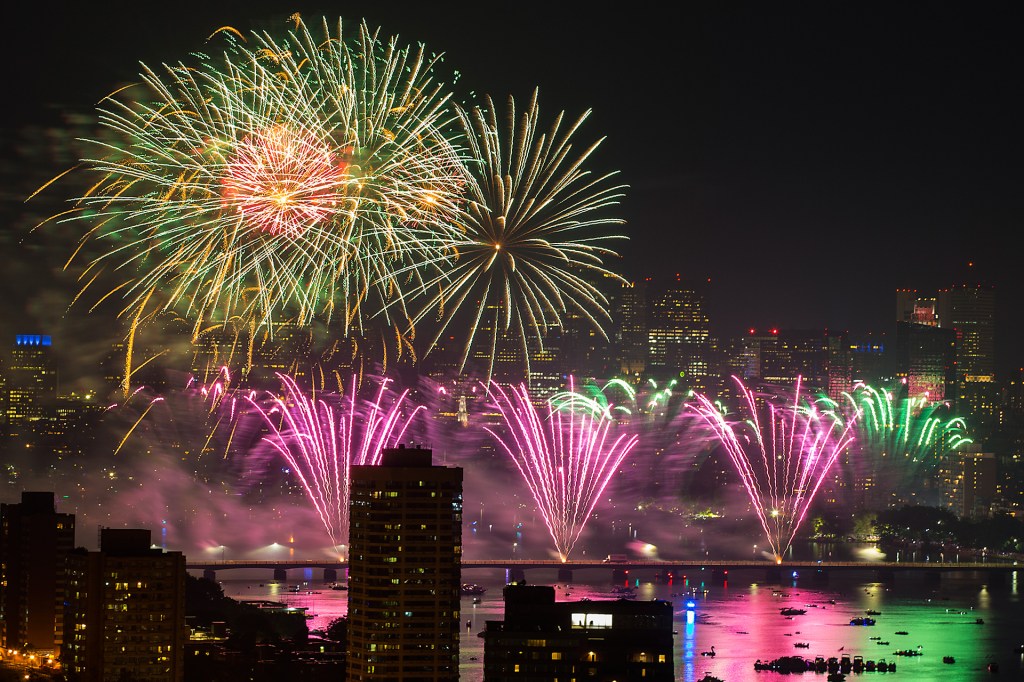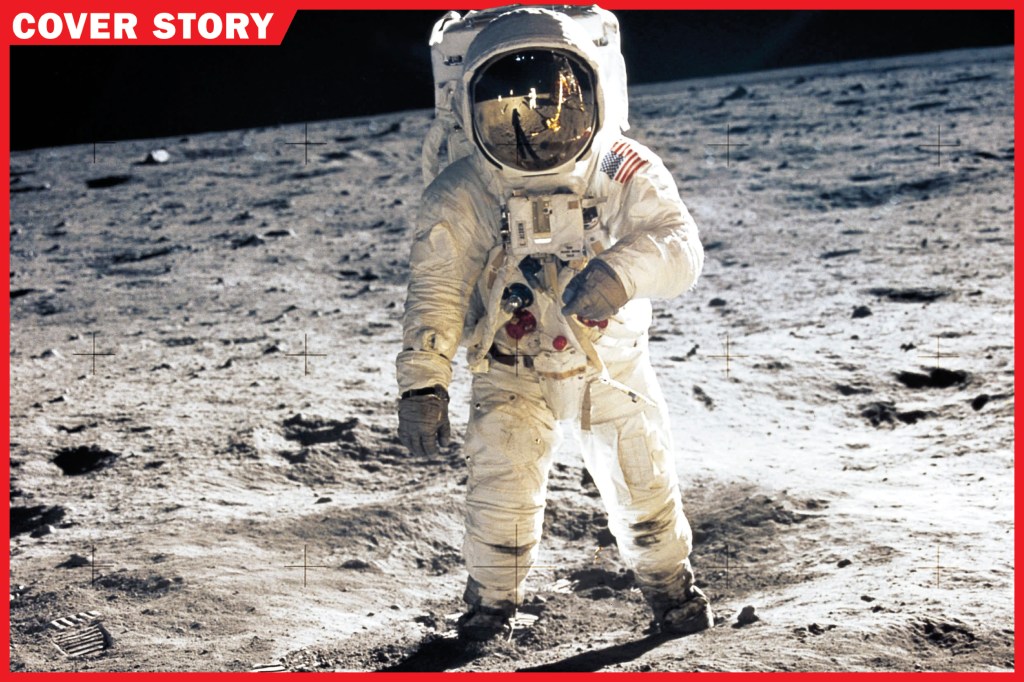
On July 20, 1969, more than 500 million people around the world watched a special event on live TV. They saw grainy black-and-white images beamed back from space. Then they heard the voice of American astronaut Neil Armstrong as he emerged
emerge
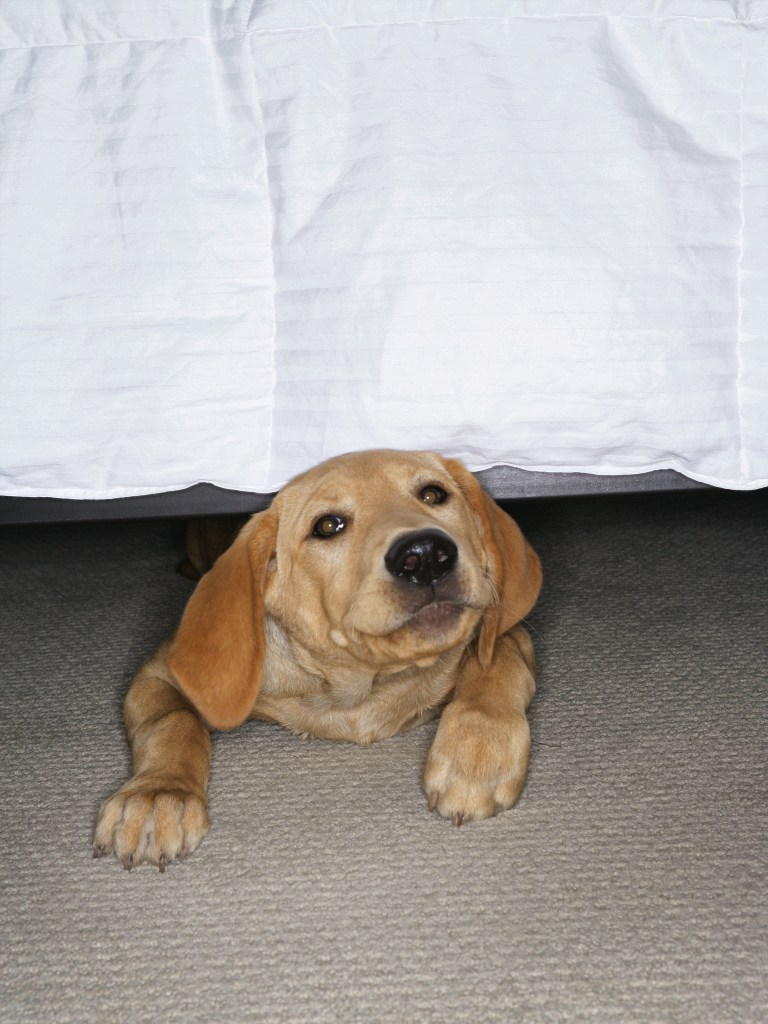 TRICIA SHAY PHOTOGRAPHY/GETTY IMAGES
to come out into view
(verb)
The dog emerged from his hiding spot under the bed.
from his spacecraft. He said, “That’s one small step for [a] man, one giant leap for mankind.”
TRICIA SHAY PHOTOGRAPHY/GETTY IMAGES
to come out into view
(verb)
The dog emerged from his hiding spot under the bed.
from his spacecraft. He said, “That’s one small step for [a] man, one giant leap for mankind.”
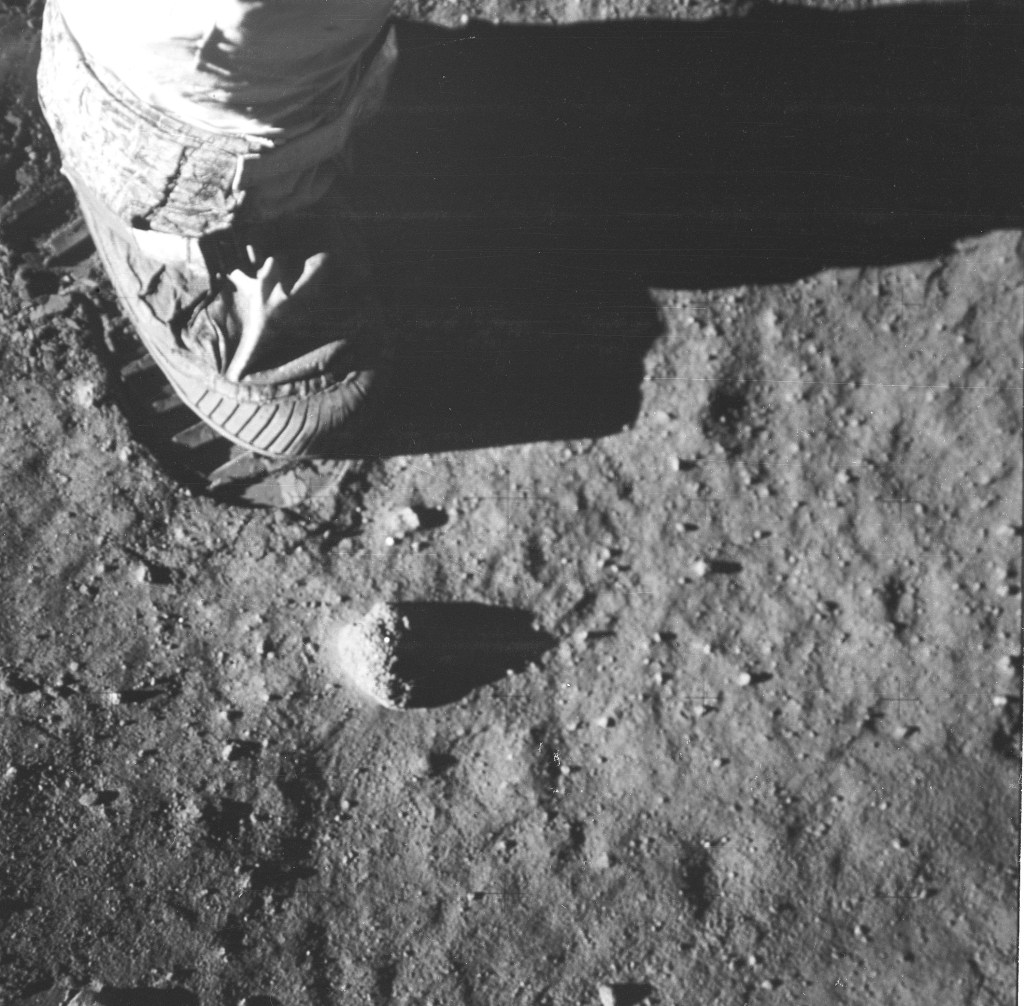
MOON WALK Buzz Aldrin’s boot makes an imprint on lunar soil.
NASAArmstrong had just become the first person to walk on the moon. His famous footsteps were the finale
finale
 PAUL A. SOUDERS/GETTY IMAGES
the end of something; the climax
(noun)
In the ballet's finale, the ballerina performs 32 turns on one foot.
of a fierce competition between the United States and the Soviet Union. Throughout the 1950s and 1960s, the two countries raced to achieve milestones
milestone
PAUL A. SOUDERS/GETTY IMAGES
the end of something; the climax
(noun)
In the ballet's finale, the ballerina performs 32 turns on one foot.
of a fierce competition between the United States and the Soviet Union. Throughout the 1950s and 1960s, the two countries raced to achieve milestones
milestone
 VCL/JUSTIN PUMFREY—GETTY IMAGES
an important event in the progress of something
(noun)
Learning how to crawl is a milestone in a baby's development.
in space exploration.
VCL/JUSTIN PUMFREY—GETTY IMAGES
an important event in the progress of something
(noun)
Learning how to crawl is a milestone in a baby's development.
in space exploration.
In 1961, U.S. president John F. Kennedy stood before Congress and issued a bold proclamation
proclamation
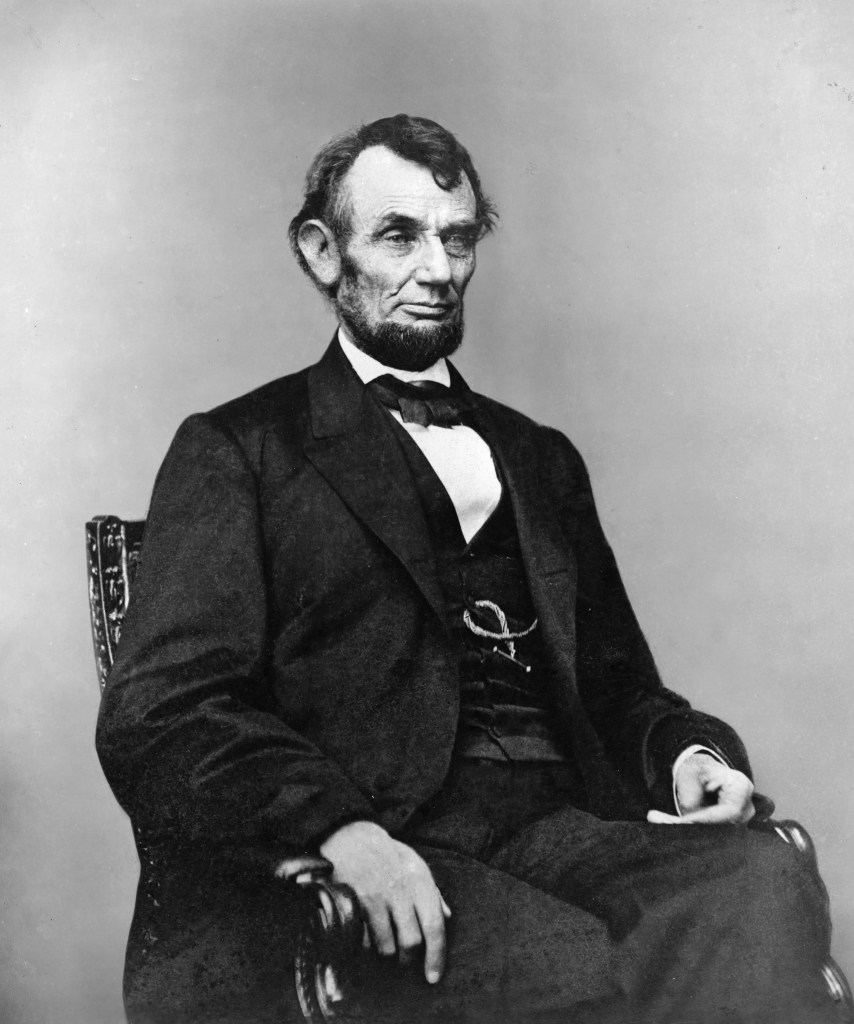 EDUCATION IMAGES/UIG—GETTY IMAGES
an official announcement
(noun)
In 1863, President Abraham Lincoln issued a proclamation freeing slaves in the United States.
. He said, “This nation should commit itself to achieving the goal, before this decade is out, of landing a man on the moon and returning him safely to the Earth.” NASA accepted the challenge.
EDUCATION IMAGES/UIG—GETTY IMAGES
an official announcement
(noun)
In 1863, President Abraham Lincoln issued a proclamation freeing slaves in the United States.
. He said, “This nation should commit itself to achieving the goal, before this decade is out, of landing a man on the moon and returning him safely to the Earth.” NASA accepted the challenge.
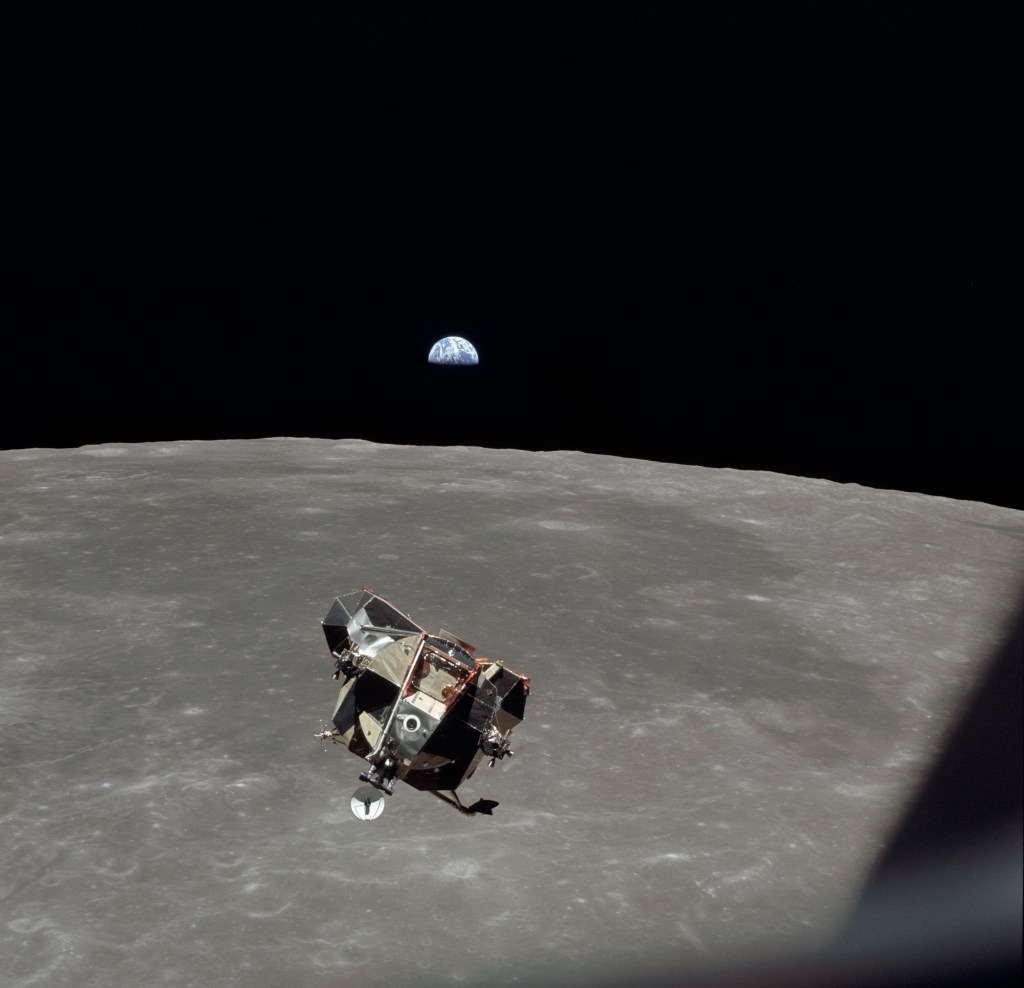
FAR FROM HOME Apollo 11’s lunar module, Eagle, returns from the moon’s surface.
NASATo the Moon!
Neil Armstrong, Buzz Aldrin, and Michael Collins were launched into space aboard Apollo 11 on July 16, 1969, from Cape Kennedy (now Cape Canaveral), in Florida. As they neared the moon, they split up. Collins was in Columbia, Apollo 11’s command module. Armstrong and Aldrin traveled in Eagle, its lunar
lunar
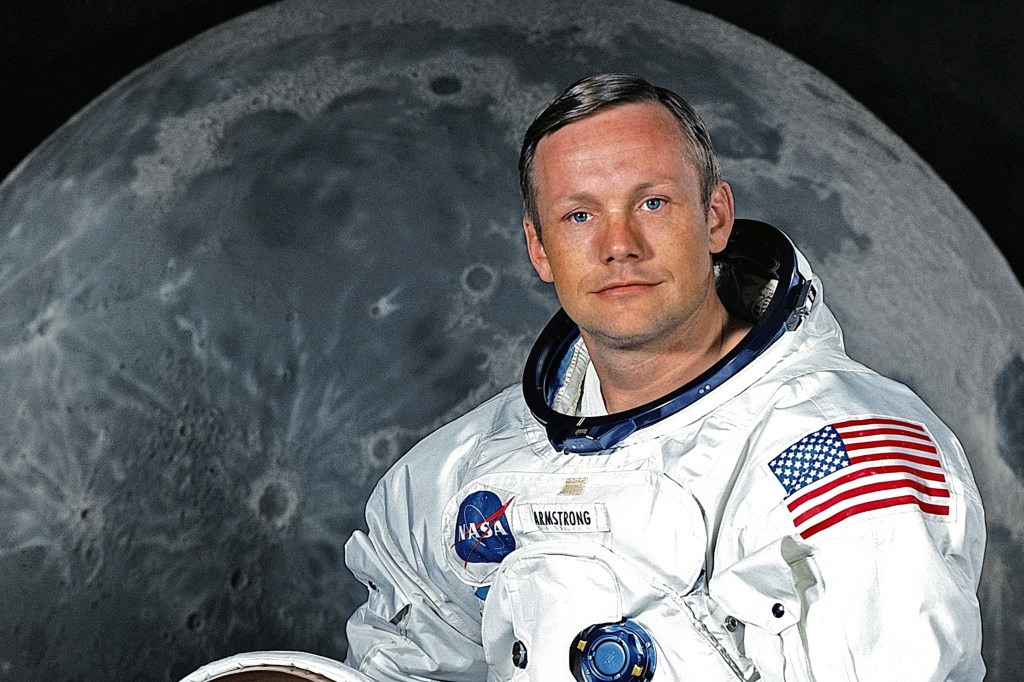 AP IMAGES
relating to the moon
(adjective)
Astronaut Neil Armstrong returned to Earth with lunar rocks and dust.
module. As Collins orbited, Armstrong steered Eagle to a fairly flat surface area that NASA had named the Sea of Tranquility. After a few tense minutes, they touched down. “The Eagle has landed,” Armstrong notified Mission Control, in Houston, Texas.
AP IMAGES
relating to the moon
(adjective)
Astronaut Neil Armstrong returned to Earth with lunar rocks and dust.
module. As Collins orbited, Armstrong steered Eagle to a fairly flat surface area that NASA had named the Sea of Tranquility. After a few tense minutes, they touched down. “The Eagle has landed,” Armstrong notified Mission Control, in Houston, Texas.
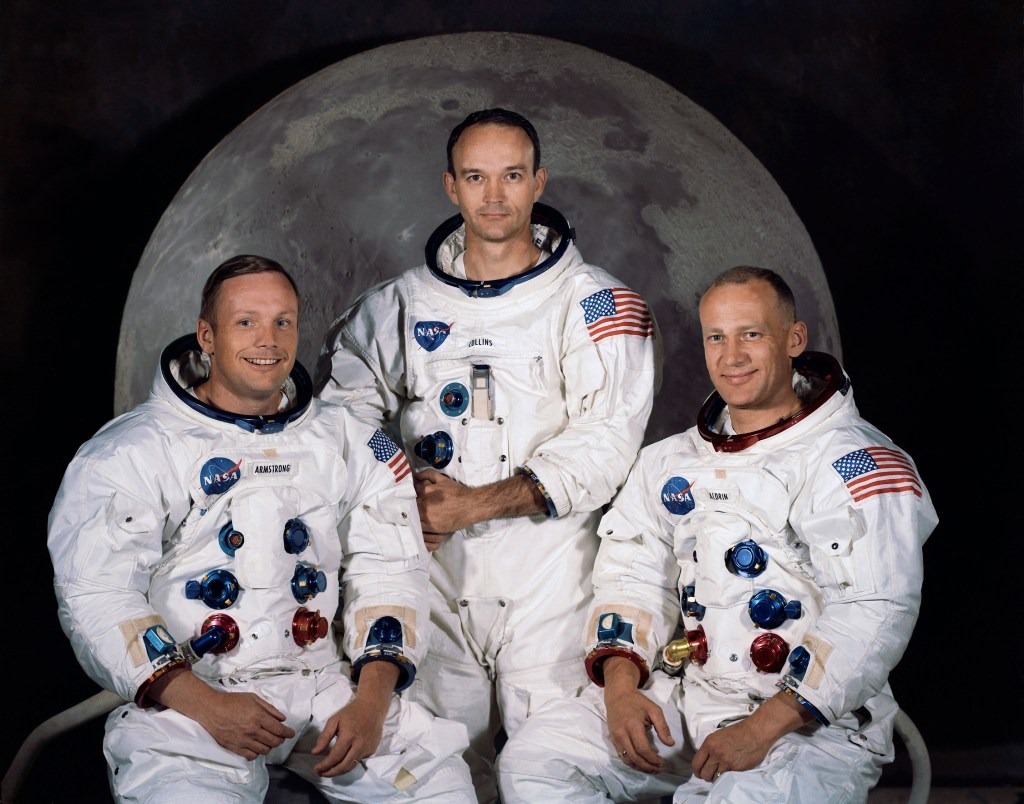
MOON MEN Neil Armstrong (left), Michael Collins (center), and Buzz Aldrin.
SSPL/Getty ImagesArmstrong and Aldrin spent 21 hours and 36 minutes on the moon’s surface. During that time, they set up science experiments and took rock and soil samples. They also planted an American flag in the powdery ground and left a plaque. It says, “We came in peace for all mankind.”
The crew returned to Earth on July 24, 1969, splashing down in the Pacific Ocean. They were picked up by a ship and taken to Hawaii, about 950 miles away. Like many other travelers, they had to go through U.S. Customs. They declared their cargo as moon rocks and dust.
Past, Present, and Future
In a recent phone interview with TIME for Kids, Collins spoke about the historic mission. For him, the most interesting part was seeing Earth from a distance. “The Earth, from 230,000 miles, is a tiny, bright, shiny object,” he says. “As you look at it, you have this strong attraction to it. Because you know it is your home. Everything you’ve known all your life is right there in a tiny dot you can blot out with your thumbnail if you stick it out in front of you.”
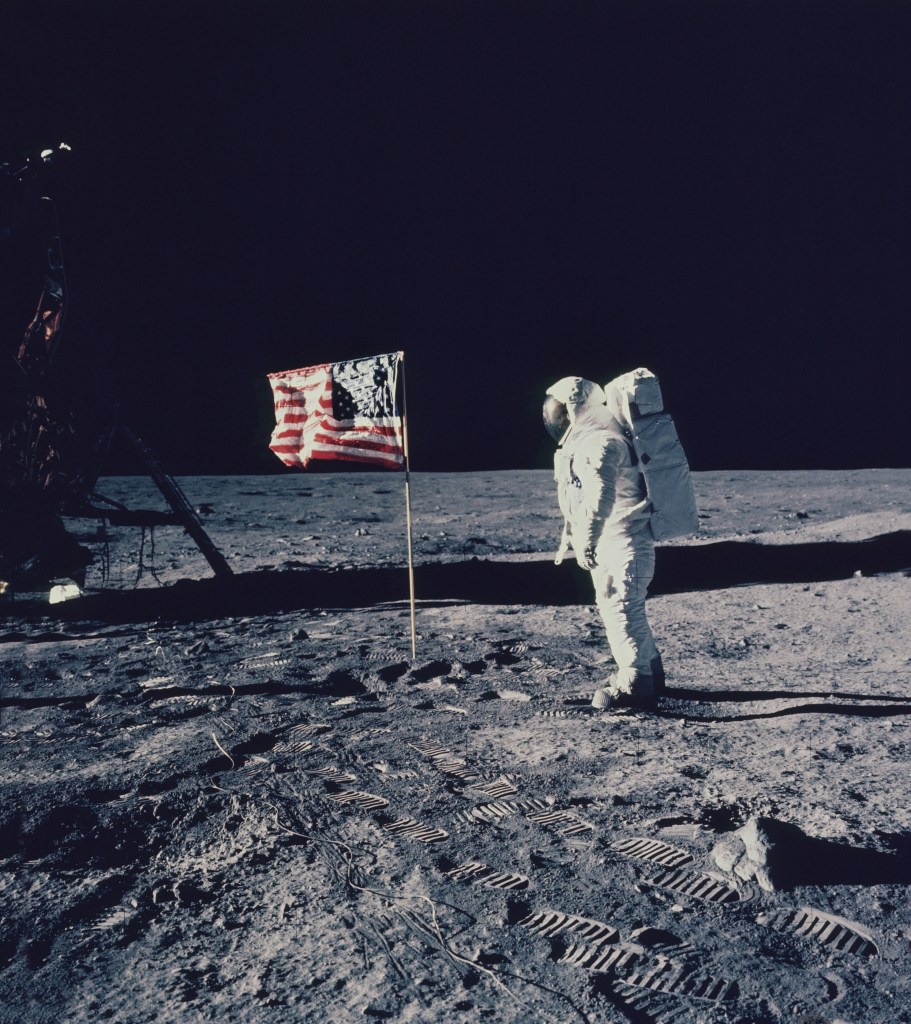
STARS AND STRIPES Buzz Aldrin stands on the moon near the American flag he and Neil Armstrong planted.
NASA/GETTY IMAGESU.S. astronauts last visited the moon in 1972. President Donald Trump has challenged NASA to send the next man—and first woman—there by 2024. The plan is to visit the moon’s south pole. Robotic missions have shown it contains water, ice, and other things that could be useful in space exploration. Cheryl Warner is from NASA. She told TFK that NASA will explore ways the moon can help astronauts prepare for travel deeper into space. “As we go farther into the solar system,” Warner says, “we need to be able to use the resources we find.” What is learned on moon missions, she adds, could help NASA send humans to another faraway destination: Mars.
Sidebar: Celebrating a Milestone
The Apollo 11 astronauts returned to Earth as heroes. They soon went on a goodwill tour to celebrate and to show that the U.S. was willing to share its knowledge. They traveled to cities across the U.S. and to 24 countries. Below, they’re shown standing in a car in a ticker-tape parade in New York City.
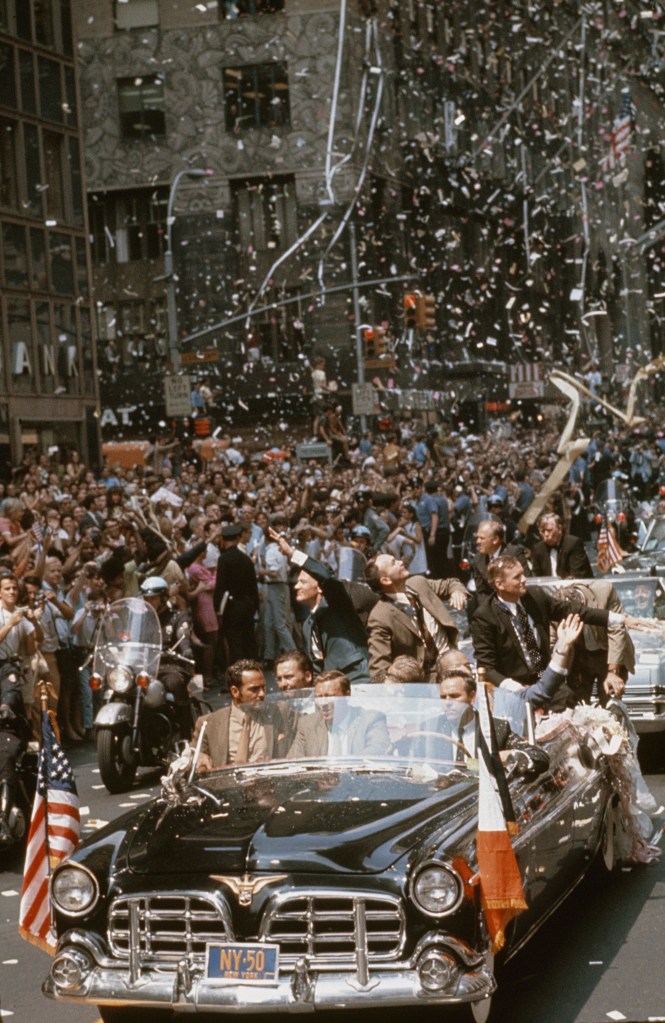
Celebrations continue this year. That’s because July 2019 marks the 50th anniversary of the mission. Special events and exhibitions are taking place at museums and other locations nationwide. The Kennedy Space Center, at Cape Canaveral, in Florida, expects a record number of visitors.





